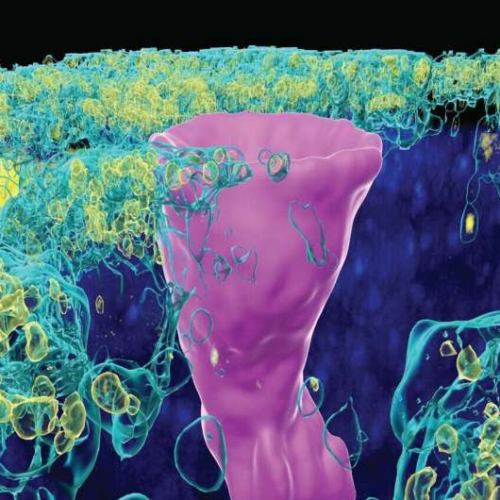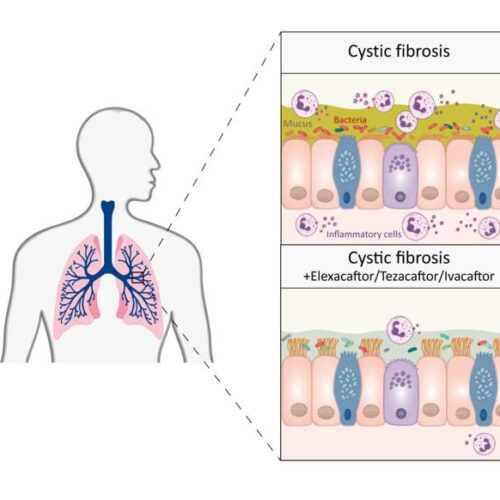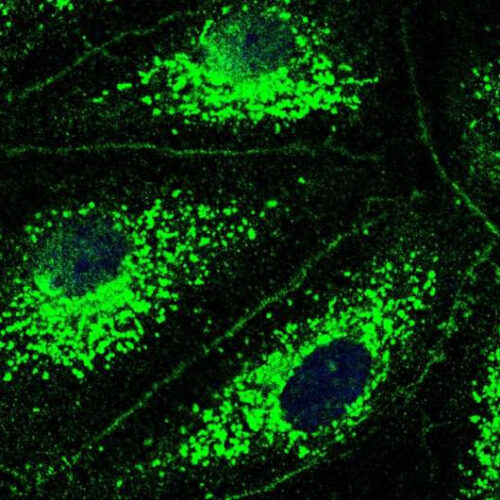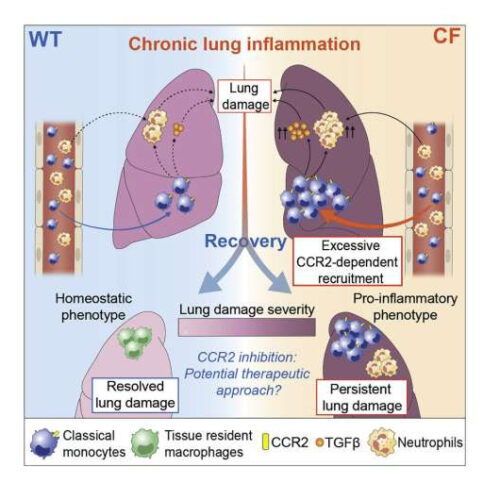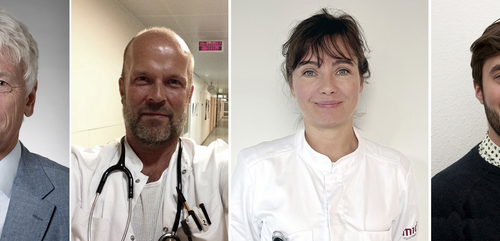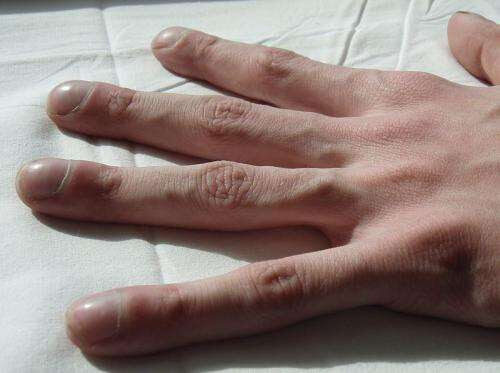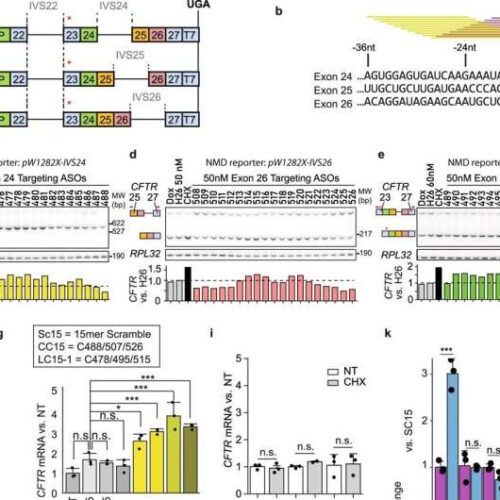Two types of dysbioses in cystic fibrosis identified.NewsPublished: June 12, 2024 | Original story from the Medical University of Vienna Credit: Robina Weermeijer / Unsplash. Read time: 2 minutesChronic lung diseases are often accelerated and exacerbated by polymicrobial infections. An international study team led by MedUni Vienna has identified two types of these so-called dysbioses...
Tag: <span>cystic fibrosis</span>
Zinc discovery holds promise for people with cystic fibrosis
by University of Queensland Credit: Pixabay/CC0 Public DomainUniversity of Queensland researchers have identified an opportunity to reduce infections in people living with cystic fibrosis (CF). Professor Matt Sweet, Dr. Kaustav Das Gupta and Dr. James Curson from UQ’s Institute for Molecular Bioscience have discovered a fault in the bacteria-killing function of immune cells in people with...
Rare lung cells reveal another surprise with implications for cystic fibrosis
by Jennifer Brown, University of Iowa Illustration shows pulmonary ionocyte (pink) embedded in airway surface (blue and yellow). Credit: Guillermo Romano Ibarra, University of IowaA new study by University of Iowa researchers finds that rare lung cells known as pulmonary ionocytes facilitate the absorption of water and salt from the airway surface. This function is exactly...
Triple combination therapy brings lasting improvement in cystic fibrosis
CHARITÉ – UNIVERSITÄTSMEDIZIN BERLIN IMAGE: COMBINATION THERAPY INVOLVING THREE DRUGS – ELEXACAFTOR, TEZACAFTOR, AND IVACAFTOR – MAKES THE MUCUS IN THE AIRWAYS OF CYSTIC FIBROSIS PATIENTS (SHOWN IN GREEN IN THE FIGURE ABOVE) LESS THICK AND STICKY. THIS MAKES IT EASIER FOR THE LUNGS TO CLEAR BACTERIA, AND THERE ARE FEWER RESPIRATORY INFLAMMATION CELLS. CREDIT:...
Cystic fibrosis drug could help treat pneumonia
by Charité – Universitätsmedizin Berlin Fluorescence microscope image of cells in the lung’s blood vessels. The study has shown for the first time that these cells possess a CFTR chloride channel (green), and that lung inflammation-induced loss of this channel results in increased permeability of pulmonary vessels. Cell nuclei appear as round dark spots, and cell...
Driver of cystic fibrosis lung inflammation yields target for treatment
by Mallory Locklear, Yale University Graphical abstract. Credit: Cell Reports (2022). DOI: 10.1016/j.celrep.2022.111797 Yale researchers have identified a possible driver of the persistent inflammation that causes irreversible lung damage in patients with cystic fibrosis, a genetic disorder that impairs breathing and digestion. In a new study, they uncover how a type of white blood cell called a...
New test can help patients with cystic fibrosis
AARHUS UNIVERSITY IMAGE: THE MAIN ACTORS BEHIND THE STUDY ARE (FROM LEFT) PROFESSOR JENS LEIPZIGER OF THE DEPARTMENT OF BIOMEDICINE AT AARHUS UNIVERSITY, CONSULTANT SØREN JENSEN-FANGEL, CONSULTANT MAJBRITT JEPPESEN AND CONSULTANT PEDER BERG FROM AARHUS UNIVERSITY HOSPITAL. PHOTO: AU CREDIT: AARHUS UNIVERSITY Researchers have developed a simple urine test to measure the severity of the...
‘Tremendous hope’: New cystic fibrosis treatment changing lives
“Clubbing” of the fingers is a classic features of Cystic Fibrosis, although not present in many patients. Credit: Jerry Nick, M.D./ Wikipedia David Fiant says his cystic fibrosis and the arduous therapy it required was so bad he “could no longer tell if I was living to heal myself or healing myself to live”. While...
Cystic fibrosis — Causal treatment suitable from childhood
CHARITÉ – UNIVERSITÄTSMEDIZIN BERLIN Cystic fibrosis remains an incurable genetic disorder which impairs lung function and significantly reduces life expectancy. A new combination drug therapy which addresses the disorder’s underlying defects offers a promising new treatment approach. The use of this therapy had previously been limited to adolescents and adults. Designed to meet the highest...
A new treatment approach for cystic fibrosis
by Cold Spring Harbor Laboratory Identification of NMD-inhibiting ASOs and assessment of their specificity. a Schematic of NMD reporters. The numbers show the CFTR exons in the NMD reporters. The red asterisk (*) indicates the location of the W1282X mutation. b Schematic of ASO screening. 19 MOE-PS-modified 15-mer ASOs (yellow and magenta bars) were designed to cover the presumptive EJC binding sites...


